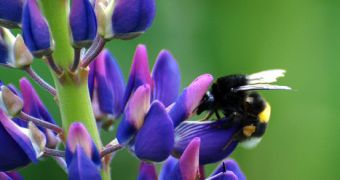It seems that meat lovers could soon be eating plant seeds instead of beef or pork, and not even tell the difference.
Lots of things need to change in this world, and there are some of which you wouldn’t normally think of, like eating veggie sausages.
This idea comes from Dr.-Ing. Peter Eisner of the Fraunhofer Institute for Process Engineering and Packaging IVV in Freising, Germany, who realized that eating meat is not only damaging our health, but also our planet.
It is true that the number of people who eat too much high-fat products is increasing at an alarming pace, and so are the obesity rates, even among children.
So, eating a low-fat diet is just what people need to be healthy and live longer, and lupin proteins might be a solution.
We all agree that food should be delicious, healthy and sustainably produced, and this is why researchers are working on new ways to use as many parts of plants as possible for nutrition.
So, in the not-so-far-away future, vegetable ingredients could replace animal raw materials, and lupin seeds, for example, could very well be used to produce low-fat, excellent sausage products.
Eisner even came up with a “milk substitute” made from lupin proteins and suitable for preparing cheese or ice cream, with the advantages of being lactose-free, with a neutral flavor, cholesterol-free and rich in polyunsaturated fatty acids.
IVV researcher Daniela Sussmann, used lupin seeds to develop a new vegetable protein isolate with fat-like properties.
She applied a special production method to the lupin seeds, and she obtained a highly viscous protein suspension with a very creamy consistency.
“The microscopic structure of this product resembles that of the fat particles in sausage meat,” Sussmann said.
“So you can use it to produce low-fat sausage products that taste just as good as the original,” she added.
The researchers carried out sensory tests during which she investigated whether adding lupin protein could improve the juicy and creamy impression of a low-fat sausage recipe, and she concluded that “by adding 10 percent protein isolate, we were able to markedly improve the fat-like impression of low-fat liverwurst.”
Well, since sausage products are some of the foods with the highest levels of fat, this would represent a huge step in the right direction, especially when, according to statistics, on average, a German eats 31 kilograms of sausage products every year.
In emerging countries like China or Brazil, people consume more and more meat and, worldwide, red meat consumption has multiplied by four since 1961.
According to the United Nations Food and Agriculture Organization (FAO), increasing prosperity will lead to a doubling of global meat production by the year 2050, but the question is whether our planet will be able to ensure all the necessary farmland resources for our future needs.
Dr.-Ing. Eisner believes that we will have to start replacing meat with plants, if we want to survive.
He explains that in order to produce meat, many resources are necessary – “producing a kilogram of meat consumes between seven and 16 kilograms of grain or soybeans as animal feed.
“As a result, in the US around 80 percent of grain is fed to livestock.”
Unlike meat production, cultivating plants as a food source is considerably less land-intensive – for one kilogram of meat, it takes 40 m² of land, while the same space could give 120 kilograms of carrots or 80 kilograms of apples instead.
The researcher points out that “plants are a source of high-quality foodstuffs, but they can also provide raw materials for technological applications – and are a source of energy.”
He proves his theory by giving sunflower seeds as an example: for now, they are used for producing oil, and their residues serve as low-grade livestock feed; this way, a 2 ½ -acre parcel of land yields around 950 euros.
If all of the components were processed and converted to high-quality raw materials for the food, cosmetics and fuel industry, that same parcel would produce an income of about 1770 euros.
If the replacement method is successful, every one would benefit: the consumer by eating less fat, the farmer through higher in come, and the environment because plant production is more sustainable than meat.

 14 DAY TRIAL //
14 DAY TRIAL //